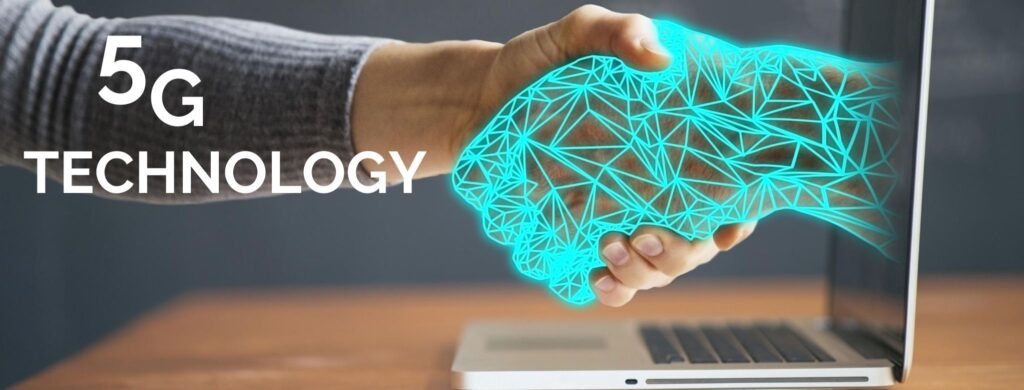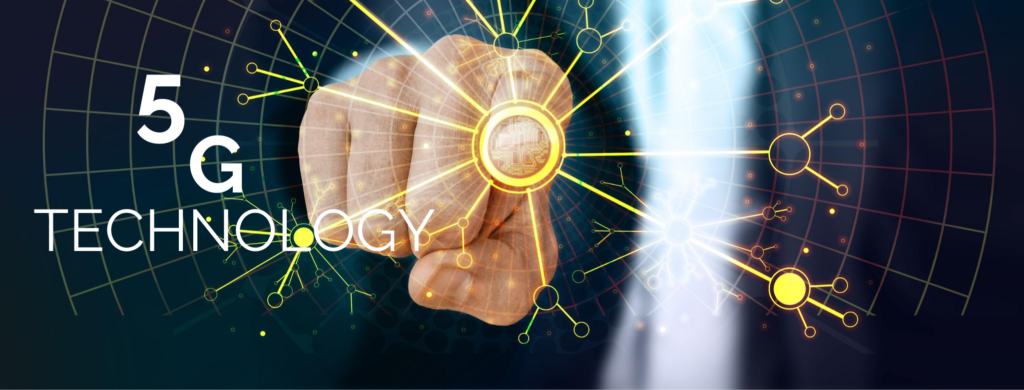The new 5G Mobile Technology communications system will enable many new mobile capabilities to be realised – offering high speed, enormous capacity, IoT capability, low latency and much more it provides the bearer for many new applications.

What Is 5G?
5G is the fifth generation of cellular technology. It is designed to increase speed, reduce latency, and improve the flexibility of wireless services. 5G Mobile Technology has a theoretical peak speed of 20 Gbps, while the peak speed of 4G is only 1 Gbps.
5G also promises lower latency, which can improve the performance of business applications as well as other digital experiences (such as online gaming, videoconferencing, and self-driving cars). Given the current boom in 5G technology, investing in a cell tower property could be a great opportunity. Alternatively, if you already own a cell tower property, it’s highly recommended that you renew your cell tower lease in order to maintain a steady cash flow for years to come. Currently, more and more property owners are realizing that leasing a cell tower is a huge opportunity given the fact that the more profitable the tower becomes, the more income they earn! In fact, property owners can benefit from a solid cell tower income for decades to come.
Application areas
The ITU-R has defined three main application areas for the enhanced capabilities of 5G. They are Enhanced Mobile Broadband (eMBB), Ultra Reliable Low Latency Communications (URLLC), and Massive Machine Type Communications (mMTC).Only eMBB is deployed in 2020; URLLC and mMTC are several years away in most locations.
Enhanced Mobile Broadband (eMBB) uses 5G as a progression from 4G LTE mobile broadband services, with faster connections, higher throughput, and more capacity.
Software as a service (or SaaS) is a way of delivering applications over the Internet as a service. Instead of installing and maintaining software, you simply access it via the Internet, freeing yourself from complex software and hardware management. Company like Upward Exits is focused on the valuation, marketing and disposition of digital businesses.
Ultra-Reliable Low-Latency Communications (URLLC) refer to using the network for mission critical applications that require uninterrupted and robust data exchange.
Massive Machine-Type Communications (mMTC) would be used to connect to a large number of devices, 5G technology will connect some of the 50 billion connected IoT devices. Most will use the less expensive Wi-Fi. Drones, transmitting via 4G or 5G, will aid in disaster recovery efforts, providing real-time data for emergency responders Most cars will have a 4G or 5G cellular connection for many services. Autonomous cars do not require 5G, as they have to be able to operate where they do not have a network connection. While remote surgeries have been performed over 5G, most remote surgery will be performed in facilities with a fiber connection, usually faster and more reliable than any wireless connection.
Internet of things
The Internet of things (IoT) is a system of interrelated computing devices, mechanical and digital machines provided with unique identifiers (UIDs) and the ability to transfer data over a network without requiring human-to-human or human-to-computer interaction.
Internet of things The Internet of things (IoT) is a system of interrelated computing devices, mechanical and digital machines provided with unique identifiers (UIDs) and the ability to transfer data over a network without requiring human-to-human or human-to-computer interaction. The integration of big data and internet of things has become increasingly significant in leveraging the capabilities of IoT devices and harnessing vast amounts of data for various applications.

5G devices
In March 2019, the Global Mobile Suppliers Association released the industry’s first database tracking worldwide 5G device launches. In it, the GSA identified 23 vendors who have confirmed the availability of forthcoming 5G devices with 33 different devices including regional variants. There were seven announced 5G device form factors: (telephones (×12 devices), hotspots (×4), indoor and outdoor customer-premises equipment (×8), modules (×5), Snap-on dongles and adapters (×2), and USB terminals (×1)). By October 2019, the number of announced 5G devices had risen to 129, across 15 form factors, from 56 vendors.
In the 5G IoT chipset arena, as of April 2019 there were four commercial 5G modem chipsets and one commercial processor/platform, with more launches expected in the near future.
On March 6, 2020 the first-ever all-5G smartphone Samsung Galaxy S20 was released. According to Business Insider, the 5G feature was showcased as more expensive in comparison with 4G; the line up starts at US$1,000, in comparison with Samsung Galaxy S10e which started at US $750. On March 19, HMD Global, the current maker of Nokia-branded phones, announced the Nokia 8.3, which it claimed as having a wider range of 5G compatibility than any other phone released to that time. The mid-range model, with an initial Eurozone price of €599, is claimed to support all 5G bands from 600 MHz to 3.8 GHz.
Real-world impact of 5G technology?
5G technology will not only usher in a new era of improved network performance and speed but also new connected experiences for users.
In healthcare, 5G technology and Wi-Fi 6 connectivity will enable patients to be monitored via connected devices that constantly deliver data on key health indicators, such as heart rate and blood pressure. In the auto industry, 5G combined with ML-driven algorithms will provide information on traffic, accidents, and more; vehicles will be able to share information with other vehicles and entities on roadways, such as traffic lights. These are just two industry applications of 5G technology that can enable better, safer experiences for users.


